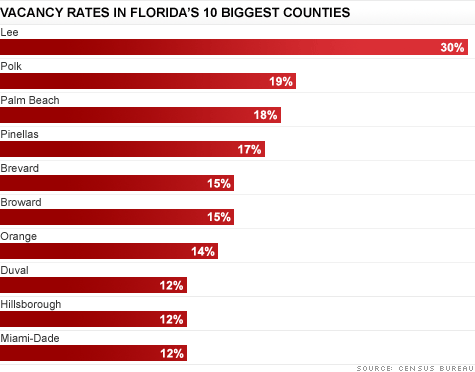Worst Foreclosed Home Vandalism Ever?

 We don't expect foreclosed homes to be in mint condition, but what Tom Moon of Pacific Moon Real Estate saw when he walked through the doors of a 3,000-square-foot bank-owned home in Huntington Beach, Calif., was perhaps the worst case of home vandalism ever. Most walls in the house were splattered in mold, a second floor caved in from a hefty pile of wet clothes, and chemicals and cement clogged the drains, reported the Orange County Register.
We don't expect foreclosed homes to be in mint condition, but what Tom Moon of Pacific Moon Real Estate saw when he walked through the doors of a 3,000-square-foot bank-owned home in Huntington Beach, Calif., was perhaps the worst case of home vandalism ever. Most walls in the house were splattered in mold, a second floor caved in from a hefty pile of wet clothes, and chemicals and cement clogged the drains, reported the Orange County Register.This was the worst example of "malicious vandalism" the 30-year veteran agent says he has seen, as vandals caused more than $250,000 in damage to the two-story home that was previously valued at more than $1.78 million when it went up for auction last year. Ownership reverted to the bank when no one purchased it, but even at that time no one knew of the damages that awaited therein. (Pictured)
Water had been left running in the Jacuzzi bathtub, perhaps in hopes of flooding the place, and appliances had been removed. Police had no leads as to who caused the damage, and it's all water under the tiles now, as far as Moon is concerned, but it's a good lesson for buyers of foreclosures, he told AOL Real Estate.
"The normal Suzy homeowner who will buy a foreclosure should pay $400 for a professional home inspection to find out what lurks behind those walls," says Moon who works primarily with banks on REO properties. "The bank has never lived in the house, the listing agent has never lived in the house. We don't know if the fireplace works or not."
"They should pay for a home inspection at their own expense to see if there is any unseen concerns, property maintenance issues, if the electrical is out in the bathroom, or if there's a little seepage in a corner."
Although Moon has crews cleaning up the mess at the Huntington Beach home, he says he is
Generally, Moon says, when it comes to any foreclosed home, banks are looking to make money on the homes, not lose it, although they often lose money on most of them when you factor in all the costs, from lawyer fees, paying tenants to move out, and the repairs. So they are not going to sink a lot of money into repairs. That's why foreclosures are typically sold, "as is."
"If we fix anything at all, we might cosmetically, say, replace carpet and paint. We might just go clean the house, whatever will help the property sell quickest for the highest amount of money. If we put in $5,000 will we hope to get $10,000 back. If we put in $5,000 and we'd only get $5,000 back, we're not going to do the work."
A buyer, he says, "they don't know if we put up the money or not. All they know is this one home is $390,000 and all the other homes are going for $400,000. We try to educate the buyer's agent to say don't have your buyer ask us to have something done." By time an REO hits the market, the bank has invested all the money it wants to invest. He says buyers can always back out of a deal if they find something they don't like. (Or at least they can back out within a certain number of days after a home inspection report, as the time frame varies state per state).
The bank wants what the market will bear, which is a price based on the neighborhood itself, from if the schools are decent to how long homes sit on the market, he says. The price does not have much to do with the actual home or how much was left on the mortgage.
"A buyer should know they are not going to get a steal of a deal just because its a foreclosure. I get on my emails and have messages from buyers saying that they are looking for a deal. This is Orange County, not San Bernadino."














 Sheree R. Curry, who has owned three homes and now rents in a Minneapolis suburb, is a three-time, award-winning journalist who has covered real estate for six years. During her 20-year career, her articles have appeared regularly in the Wall Street Journal, TV Week, and Fortune. She's been with AOL Real Estate since 2009 and seeks a book publisher -- or at least a lender who'll give a reasonable mortgage rate to a self-employed mom.
Sheree R. Curry, who has owned three homes and now rents in a Minneapolis suburb, is a three-time, award-winning journalist who has covered real estate for six years. During her 20-year career, her articles have appeared regularly in the Wall Street Journal, TV Week, and Fortune. She's been with AOL Real Estate since 2009 and seeks a book publisher -- or at least a lender who'll give a reasonable mortgage rate to a self-employed mom.





